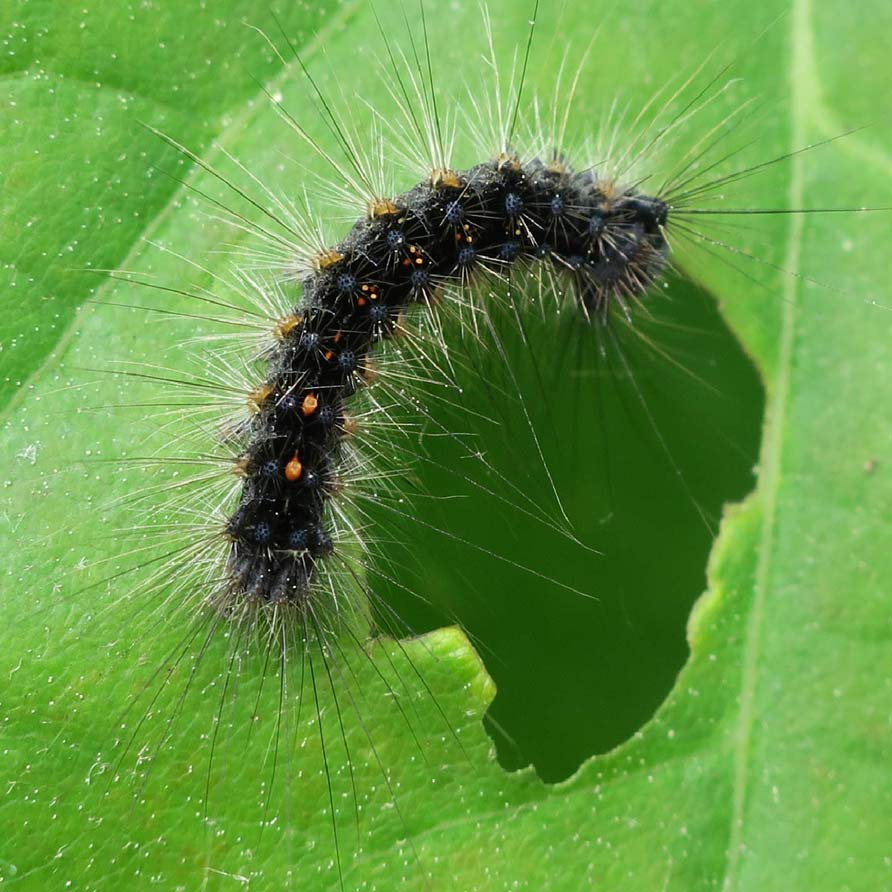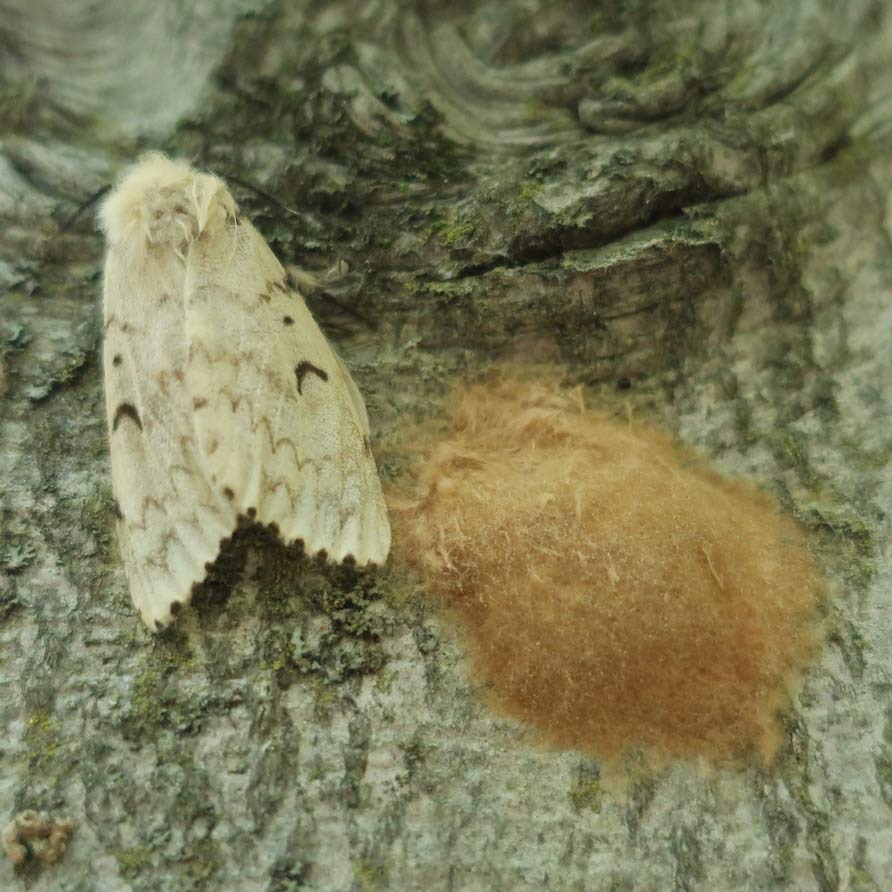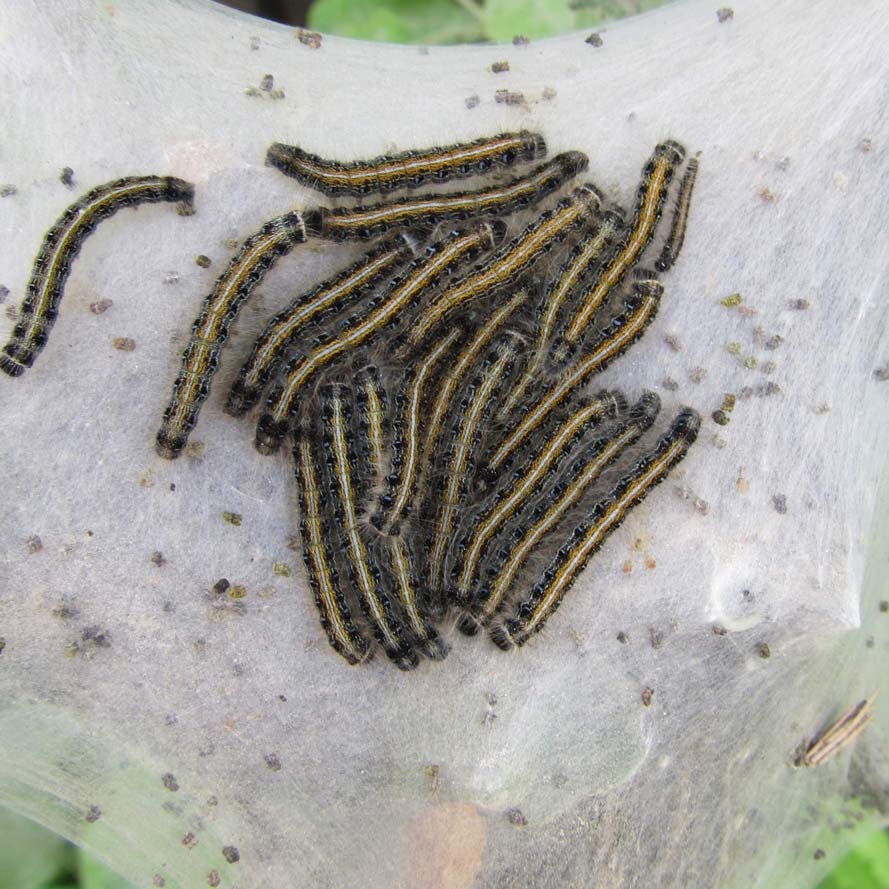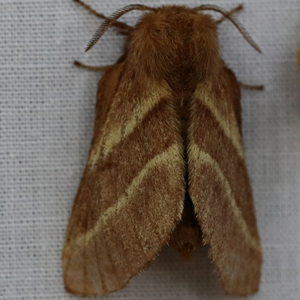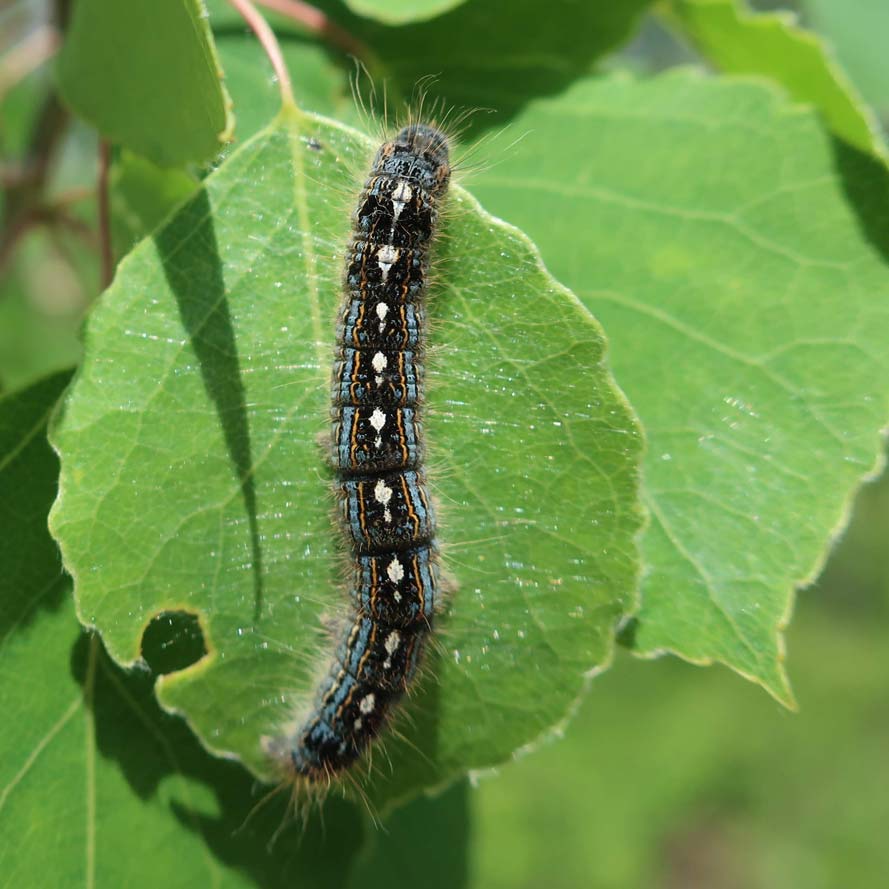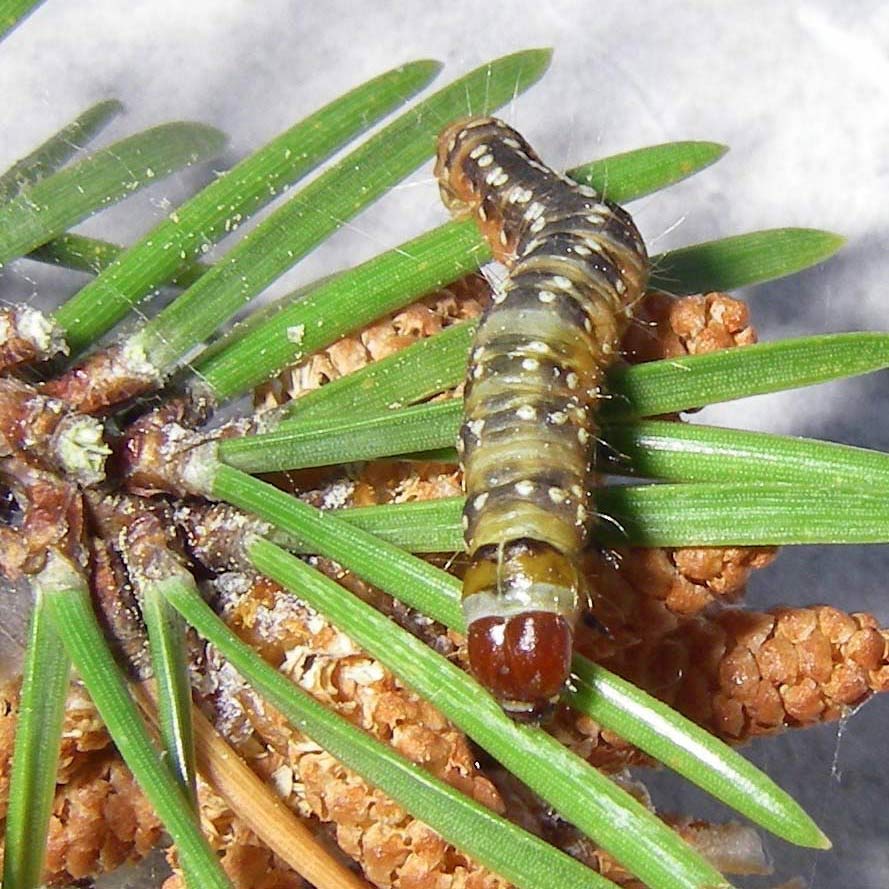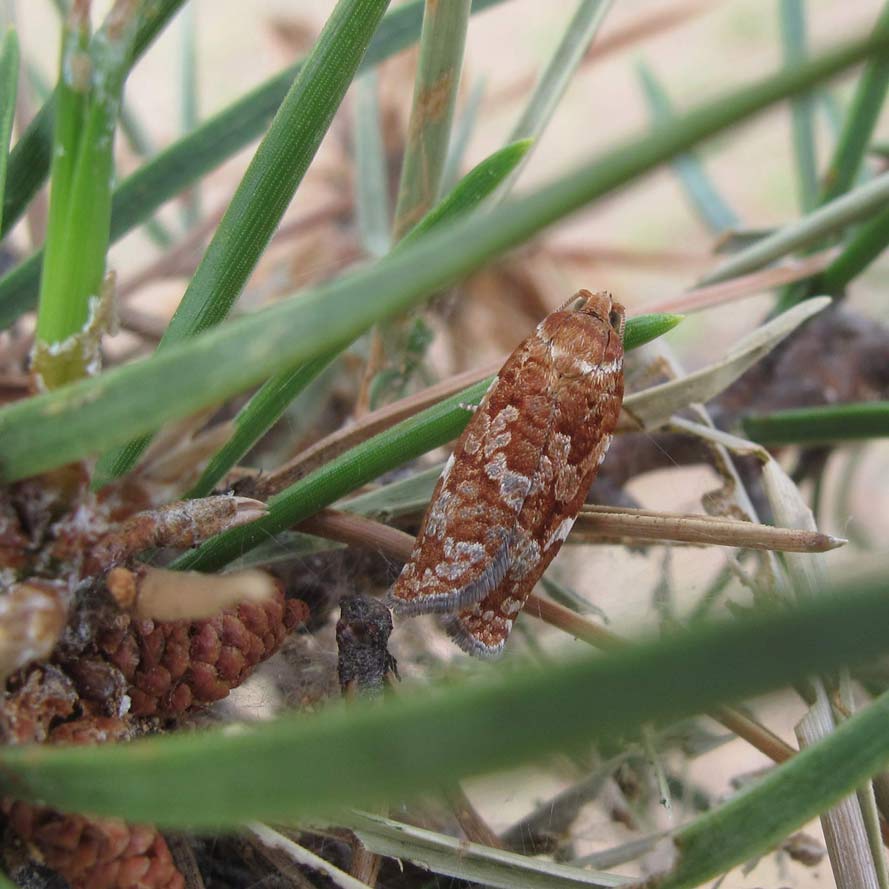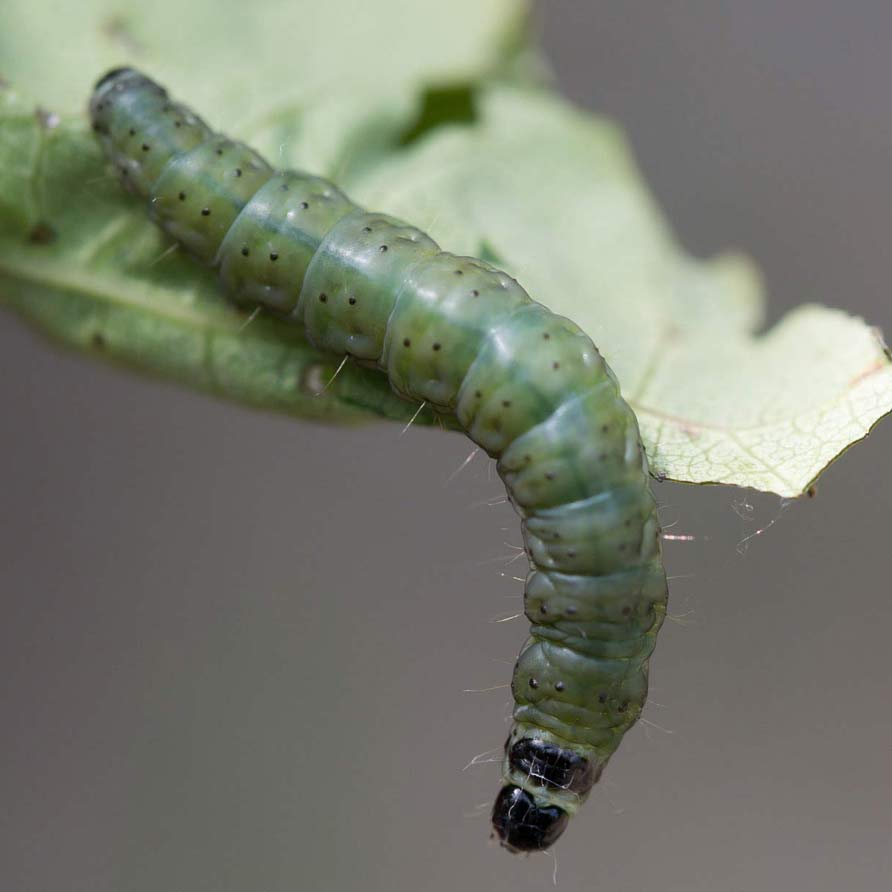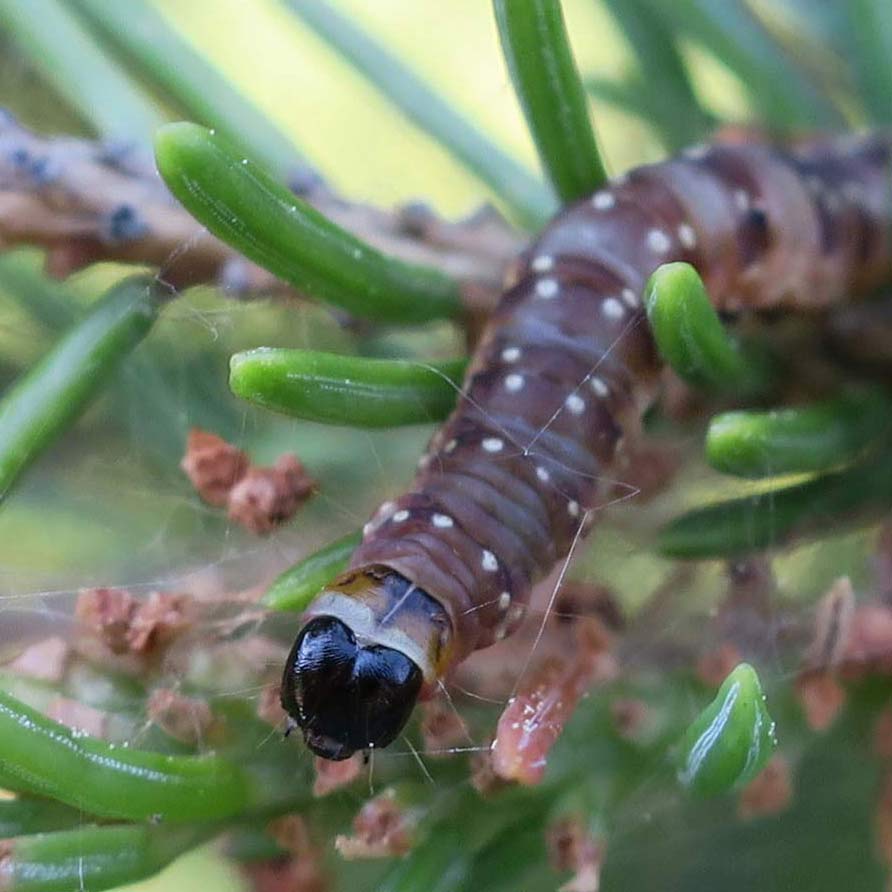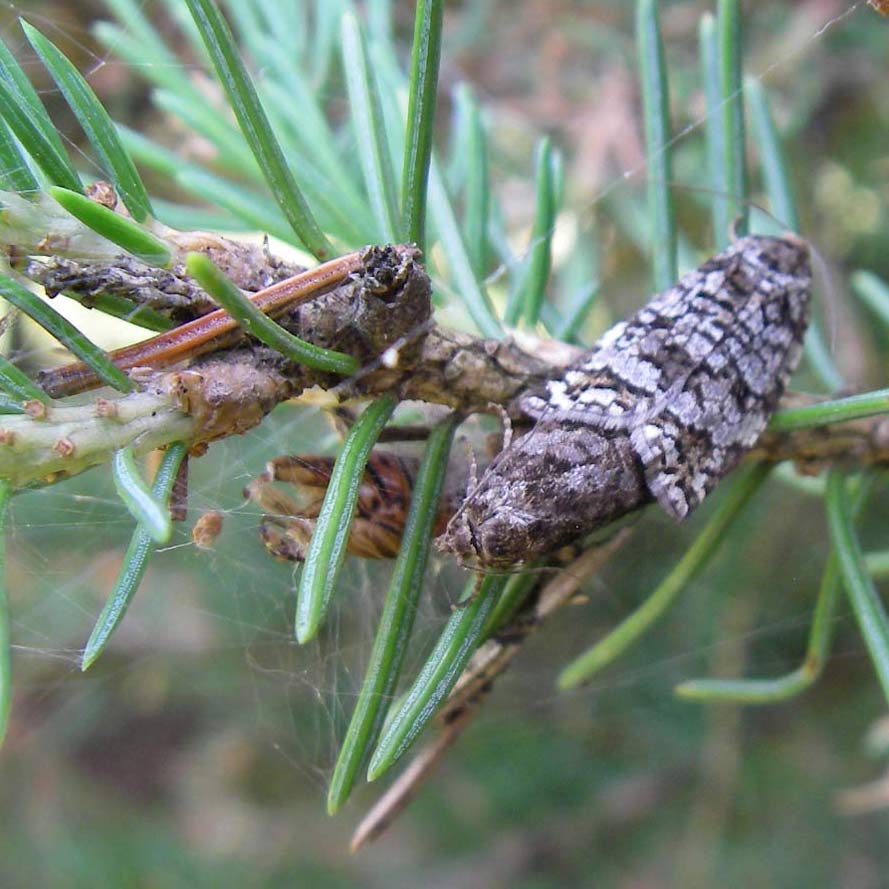Spongy moth and other defoliators
Learn about common caterpillars that strip the leaves from trees and shrubs, and what you can do to protect your property.
Overview
Tree leaves attract hungry caterpillars. Caterpillars turn into the moths you see in mid-summer. These moths live only long enough to mate and lay eggs. Some species will overwinter as eggs while others will hatch into tiny larvae and overwinter in places such as:
- under bark scales
- in fallen leaves
- other protected places
They emerge in spring to feast on tree leaves and new growth.
Even though most trees can withstand a few seasons of having their leaves removed, also known as defoliation, before it affects their health and growth, it’s good to know what's affecting them and what you can do about it.
Protect trees on your property
- Plant multiple types of tree species with plenty of space between them. This will help create a more resilient forest, which protects trees from insects and diseases.
- Keep your trees healthy: water them, including into the fall and protect the roots.
- Monitor your trees: know what is happening and intervene if needed. Early action is key to success.
- Call an arborist for advice: considerations will influence which control options make sense, such as:
- what is causing the damage
- how many trees are affected
- the life stage of the pest
- For spongy moth and both tent caterpillars:
- put a band of cloth or burlap around the stem and check it daily to remove and destroy caterpillars hiding underneath or use a sticky band to capture them
- in fall/winter, remove egg masses and destroy them
- For large aspen tortrix, let natural predators take care of it.
- For spruce and jack pine budworm, wait it out as outbreaks are cyclical and will soon decline.
- For all defoliators mentioned, apply Bacillus thuringiensis kurstaki (Btk), a natural soil dwelling bacterium that is toxic to young caterpillars when eaten, early in the season. Insect control on private or municipal land is the responsibility of the landowner or the municipality. If you need help controlling insect populations, contact a certified pest control service provider.
- Do not move wood products into or out of pest regulated areas.
Spongy moth – invasive
Caterpillar: dark-coloured, hairy, with a double row of five pairs of blue spots, followed by a double row of six pairs of red spots down its back. Feasts on oak, maple and other deciduous trees.
Moth: female is white with black wavy lines across forewings and a hairy body (shown: does not fly). Male is mottled dark and light brown and looks triangular when resting. Active late-July to early September. Laying small, fuzzy, tan-coloured clumps of eggs in sheltered places. Overwinters as eggs.
For more information visit spongy moth.
Eastern tent caterpillar – native
Caterpillar: hairy, brownish black with a light stripe down the back and blue spots/brown-yellow lines along the sides of body. Feasts mostly on cherry, apple and serviceberry. Stays in groups, making tent-like nests in branches.
Moth: usually reddish- but can be yellowish-brown with two pale stripes across forewing. Active mid-June to early August, laying eggs around branches in a pencil thick mass with a shiny black coating. Overwinters as eggs.
Forest tent caterpillar – native
Caterpillar: think of footprints in the forest, it has what looks like shoe prints down middle of its back. Feasts on deciduous trees. Does not make tents.
Moth: buff coloured moth with oblique lines on forewings. Active mid-June to early August, laying eggs in a protective covering that looks like a grey cluster of foam on branch. Overwinters as tiny larvae in eggs.
For more information visit Forest tent caterpillar.
Jack pine budworm – native
Caterpillar: reddish brown head and body with yellowish sides and two rows of white dots on their back. Feasts on jack pine.
Moth: mottled red/brown and gray moth. Active mid-July to early August, laying eggs that hatch in seven to 10 days, with larvae forming a silky cover between bark scales and needles in which to overwinter.
For more information visit Jack pine budworm
Large aspen tortrix – native
Caterpillar: dark green to black (20 mm) with black spots and brown head and legs. Feasts on aspen/poplar.
Moth: mottled light and dark gray moths that are slightly bell shaped with a fringe along bottom edge of hind wings. Active in July and early August, laying eggs in clusters on leaves. Overwinter as larvae.
For more information visit Large aspen tortrix.
Spruce budworm – native
Caterpillar: black head with reddish brown body that is lighter on the sides with two rows of whitish spots on its back. Feasts on spruce and balsam fir.
Moth: mottled gray and somewhat bell-shaped moth. Active July to early August, laying eggs in small clusters on needles. Overwinters as larvae.
For more information visit Spruce budworm.
Find more information
- About how to manage spongy moth: check out the fact sheets developed by the ministry and its partners: spongy moth and invasive insects: spongy moth.
- About invasive forest pests and diseases (PDF)
- About what affects forest health in Ontario: every year we monitor forested areas and green spaces in Ontario for insect, disease and weather-related disturbances like wind or drought. Summaries are available at Forest health conditions.
Some of the information may not be compatible with assistive technologies. If you need any of the information in an alternative format, please contact us.
